'Life-changing': Ethiopian farmers revamp age-old growing practices
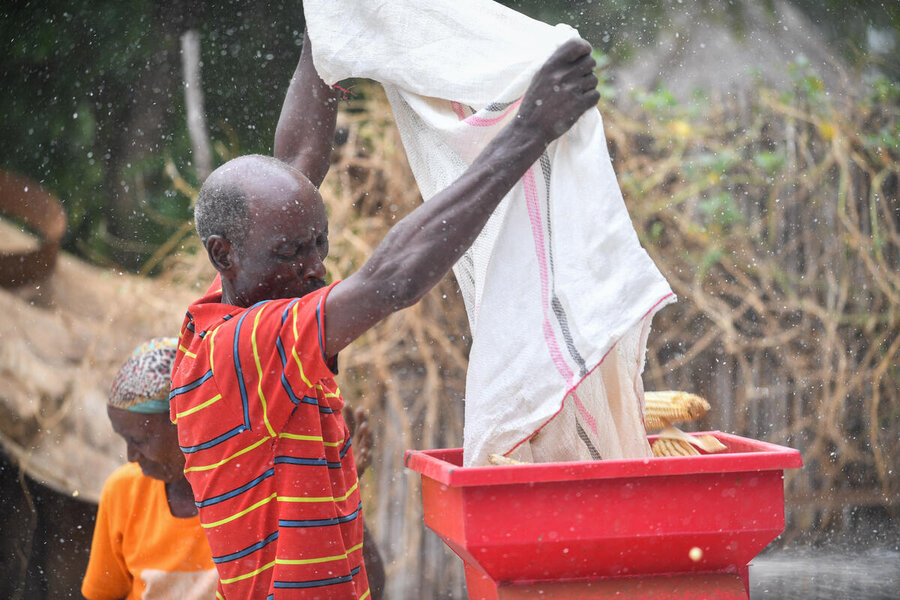
Outside his home in Ethiopia’s western Gambella Region, 56-year old Belete Abate feeds ears of maize into a red threshing machine, watching it separate and spit out pearly grains from the husks.
“It would take us a week to thresh if we did it manually,” says Abate, indicating the piles of still-intact ears behind him. “This machine does it in the hour.”
That’s not the only sea-change the farmer has seen since joining a World Food Programme (WFP)-supported programme in 2022, aimed to boost and diversify harvests and build resilience. Launched in collaboration with Gambella’s regional government, the initiative targeting 10,000 area farmers is part of Ethiopia’s broader drive to fight hunger and build strong food systems - which underpin the production, processing, transport and consumption of food.
As Ethiopia holds a major food systems summit in Addis Ababa, examples of smallholder farmers like Abate - who are moving from subsistence harvests to growing the food sold in markets and served up in schools - illustrate the country’s strides in transforming its food system, with support from organizations like WFP.
“Food systems transformation really needs government ownership - and that is what’s happening in Ethiopia in a strong way,” says WFP Ethiopia resilience officer Sinshaw Alemu. Of WFP, he adds, “we are really aligning our programmes on federal, regional and local levels - making sure they reflect big national priorities.”
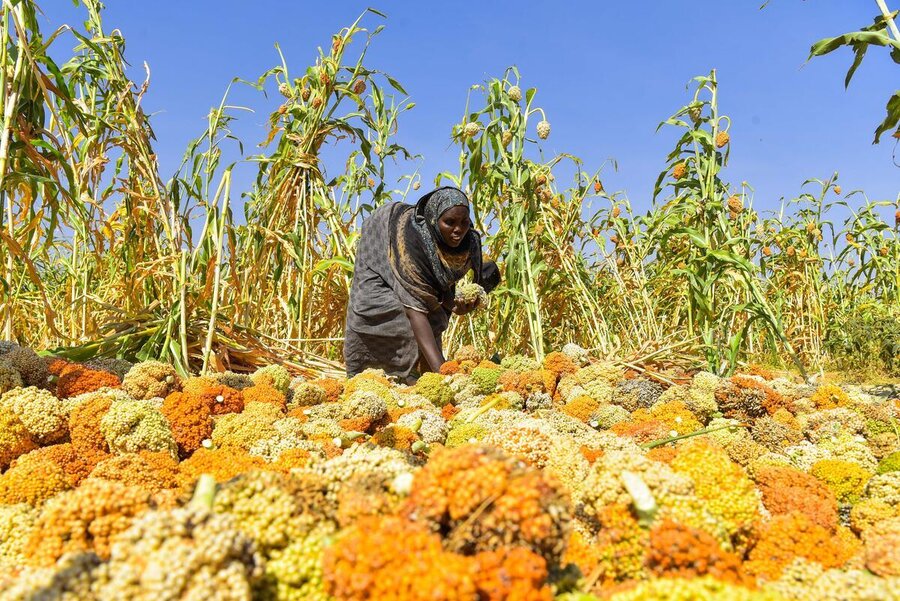
Central to those priorities are Ethiopia’s 12-13 million smallholder farmers who produce most of the country’s harvests, often on tiny half-hectare plots. They face a raft of challenges, including conflict, extreme weather, land degradation and poor infrastructure, Alemu says, along with limited access to markets financing and technology.
But in Gambella and elsewhere, WFP is working with Ethiopian authorities, humanitarian partners and rural communities to turn that trajectory around: focusing not only on boosting and diversifying production in sustainable ways, but also on more nutritious diets, drought-tolerant crops, better farming techniques and new financing and markets - including through our school meal programmes.
“Before we joined this programme, life was a constant struggle,” says farmer Abate. “We planted but were not able to harvest. We farmed but didn’t see many results. We didn’t have the knowledge of how to manage our farm.”
Better harvests, better meals
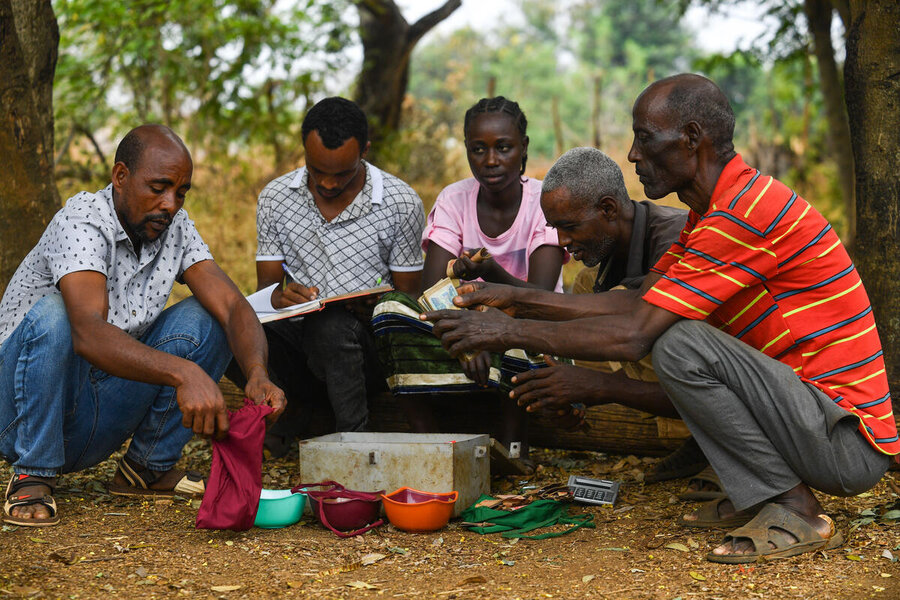
In Abobo woreda (or administrative division) where Abate lives, WFP introduced mechanized tilling and drought-resistant seeds, and gave the area’s mostly maize and sorghum farmers training on better crop storage, along with equipment like threshing mats. The farmers founded a village savings and loan association, pooling resources to buy the corn threshing machine - which they now rent out to other farmers.
“WFP was with us day in and day out, from the moment we planted, to when we harvested and stored our produce,” Abate says, calling the support “life changing.”
WFP also helped Abate’s farming group reach new markets, allowing them to negotiate higher prices for their harvests. “I have never earned so much money in my life,” says Abate, a father of six, of the nearly US$1,600 dollars from his maize sales.
In Ethiopia’s northern Amhara region, farmer Ali Yimer is also seeing the dividends of WFP’s support to area farmers, including solar-powered irrigation pumps, along with vegetable seeds and fertilizers. The supplies are part of a broader resilience project that helps tens of thousands of farming households better resist climate shocks, boost production and food security, and restore depleted soils.
“My harvests are much better than before,” says Yimer, who has tilled the land for more than half a century.
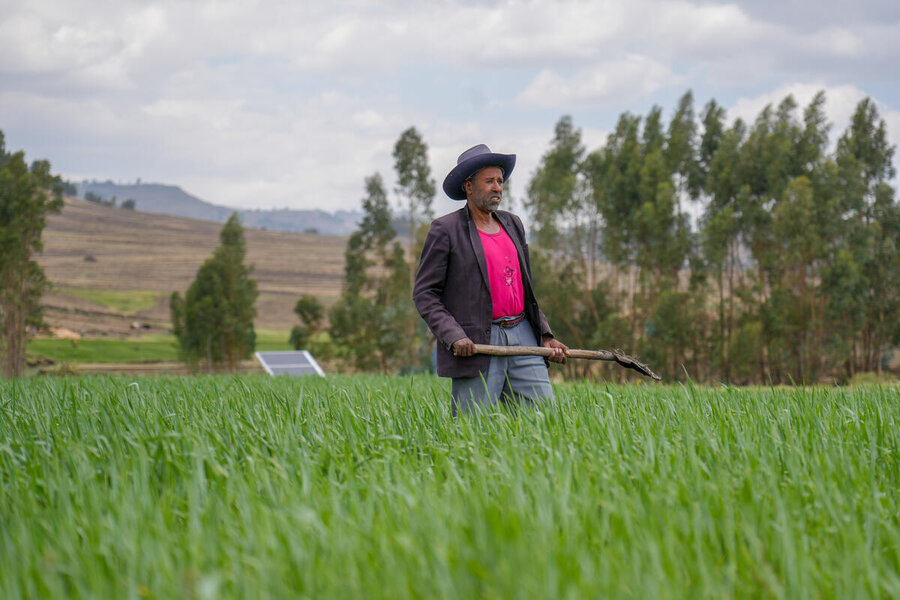
WFP is also supplying a market for Ethiopian farmers through our locally sourced school meals, which reach hundreds of thousands of students in places like Ethiopia’s Southern Nations Nationalities and Peoples' Region. They help to achieve the regional government’s aim of increasing school enrolment, and fighting hunger and malnutrition.
“We had tomatoes, rice, meat and carrots today,” says 6-year-old Haimanot, of the food WFP procures from local farmers. “I love lunchtime when there is meat. I eat everything and leave nothing on my plate.”
For Haimanot’s mother, Marha Gonzar, such nutritious meals are a rarity in her household. Her pastoralist family has seen its livelihood dry up, along with the rains. “I remember a time when we had plenty to eat and share with our neighbours," Gonzar says. "It all seems like a dream now.”
Of her daughter, she adds, “if she continues her education and grows with these school meals, she will grow up healthy. And that makes me happy.”
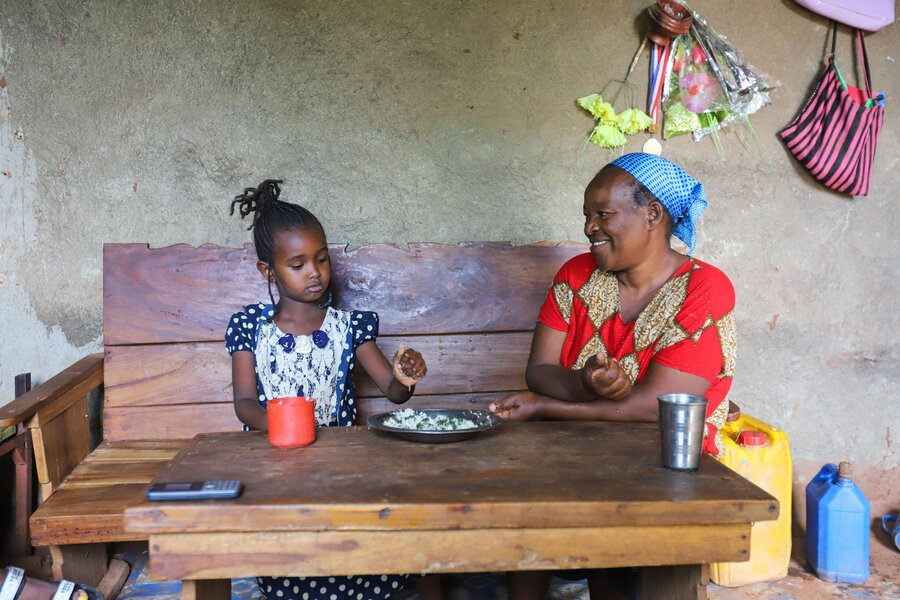
In Gambella, farmer Abate is also looking ahead, planning bigger and bolder investments in his farm.
“As a farmer, knowing all these new techniques, and having access to machinery, this is priceless,” he says. “Everyone in the community is happy.”
WFP's work with smallholder farmers is supported by Denmark, Germany, the Joint SDG Fund, Ireland, Japan, New Zealand, private donors, the Republic of Korea, Spain, the United Kingdom and UN CERF.
